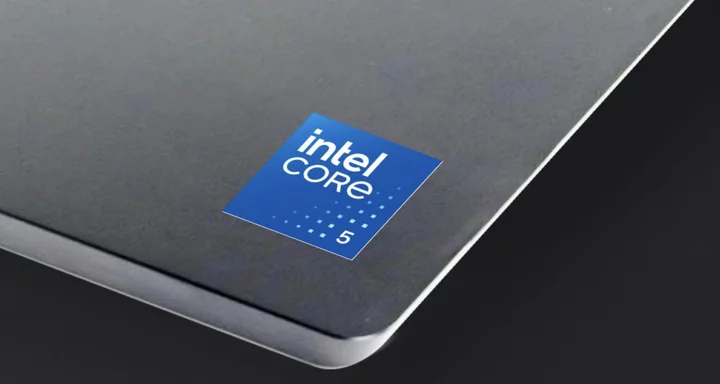Love it or hate it, Intel is overhauling its system of naming and marketing its Core processors for laptops and desktops, which has been in place for almost 15 years.
To simplify the company’s branding, Intel is removing the “i” from the i3, i5, i7, and i9 tiers for its Core chips, a move Intel previously hinted at last month. Going forward, consumers will only see Core 3, Core 5, Core 7, and Core 9.
But in a more surprising move, Intel is also ditching the “generational messaging” behind each Core series. Hence, you won’t see a 14th Gen or 15th Gen Core series, at least not officially. Instead, future Core chips will simply be given a processor number, for example "Intel Core 5 processor 1050."
When the next generation comes along, the numbering will then go up sequentially. For example, a following generation would likely be the Intel Core 2000 series, although the company is still ironing out the exact details of how the new numbering scheme will represent successive generations.
Meet the Intel 'Ultra' Chips
The name-scheme changes don’t stop there. Intel will also be designating a new processor tier, called Core Ultra. The Ultra processors will cut across the Core 5, Core 7, and Core 9 levels, and feature Intel's most cutting-edge CPU architecture or premium features. The basic, non-Ultra Core lines will be allocated to the CPUs intended for a mainstream audience.
You can expect the Ultra chips to arrive with names in the form of "Intel Core Ultra 9 1090H." (Note: The 1090H, like the 1050 above, is given as an expressive example, not reflecting any announced chip.)
“The first digit of the products coming out here will indicate the newness,” Tim Thraves, senior product brand manager at Intel, told PCMag. “You will see that there is an organizational system.”
The company is preparing the overhaul to bolster the marketing for "Meteor Lake," or what was broadly expected to be dubbed the company's "14th Generation Core" processors. The new silicon will use Intel’s long-awaited Intel 4 manufacturing process (formerly known as 7-nanometer before it underwent its own name change) and promises to offer substantial improvements in performance and battery life, at a time when the company is facing heated client-silicon competition from both AMD and Apple.
“We were hearing from customers and partners that Meteor Lake is a pretty big inflection point for us,” Thraves said. “It just felt like maybe this was a time—a little bit—to go outside the box of incrementing from one number to the next.”
Intel: We Want to See More 'Core'
The revamp also aims to emphasize the "Core" in the Intel Core name, seeing as, according to the company, the i3/i5/i7/i9 schema and the 12th Gen and 13th Gen messaging has tended to hog the spotlight.
“There was just a little bit of, ‘Hey, we see way too many articles of i7 versus (AMD’s) Ryzen 7,’" Thraves said. "And we just wanted to put a little bit more focus on the Intel Core brand."
In addition, the company conducted market research last year that found “the combination of Intel Core, plus the label of those tiers” rated highest among consumers when it came to awareness. “It had been probably 15 years since we did an all-in look at the (PC) client branding here,” Thraves noted.
When it comes to the newly unveiled Core Ultra brand, consumers can expect some significant differences with the standard Core line, such as exclusive features involving AI-powered capabilities. “We’ve been really clear that in order to have a two-tier branding strategy, it can’t just be like a 2% performance improvement,” Thraves said.
“We are developing products specifically for more premium segments, as well as different products for mainstream," he added. "That’s a slight shift from what you’ve seen from Intel in the past, where we’ve typically taken one product and just ramped it from top to bottom.” This also means that, over time, consumers could see one CPU architecture power Core Ultra chips in a family, while another architecture drives the standard Core series.
But while Intel is ditching the explicit generation names and the classic i3, i5, i7, and i9 terminology, the company still plans on using suffixes like the well-known H, P, U, K, F, and KF on Core chips to help consumers identify the purpose for each processor. For example, the current H series generally focuses on high performance in laptops, while the U series specializes in low-power mobile processors.
Old 'Core i' Chips Stay 'Core i'
Intel will likely launch Meteor Lake in September, so you can expect to hear more details about the new naming scheme in the weeks ahead. The company also plans on educating consumers about the new branding system with the help of PC partners. Meanwhile, the old marketing involving the successive generations (through the 13th Gen Core families) and the classic i3, i5, i7, and i9 will remain intact for existing chips. In other words, the names of pre-Meteor Lake processors won't be retrofitted to match the new naming conventions.
Thraves also acknowledged the upcoming overhaul is bound to rankle the tech press and even some Intel insiders. But the chip maker expects the change to pay off.
“We do think over time, it’s going to be an easier construct, an easier system for the vast majority of the users out there,” he said. “Look, for average users, getting them to care about buying an Intel product versus the competition, that’s goal number one.”

